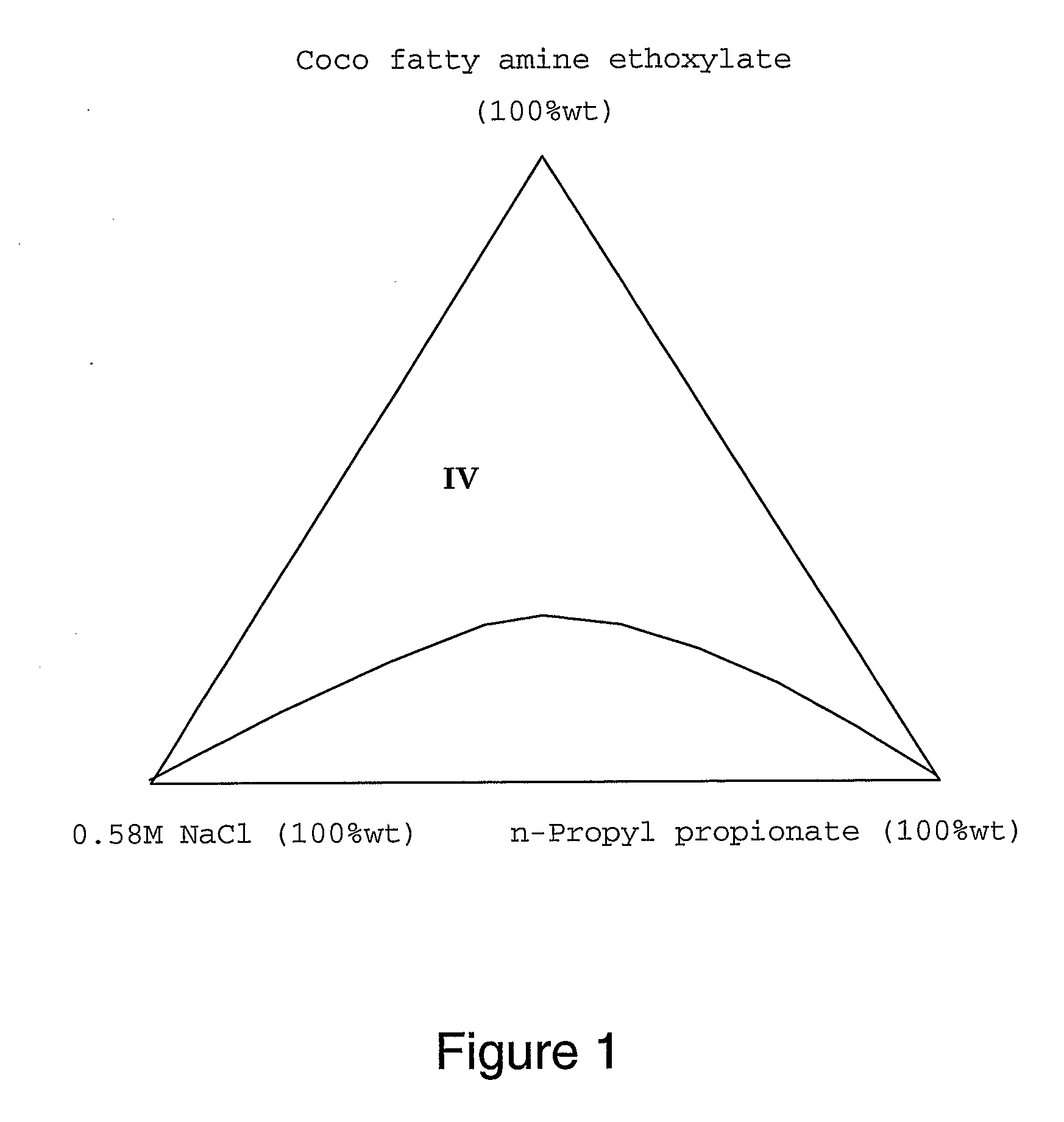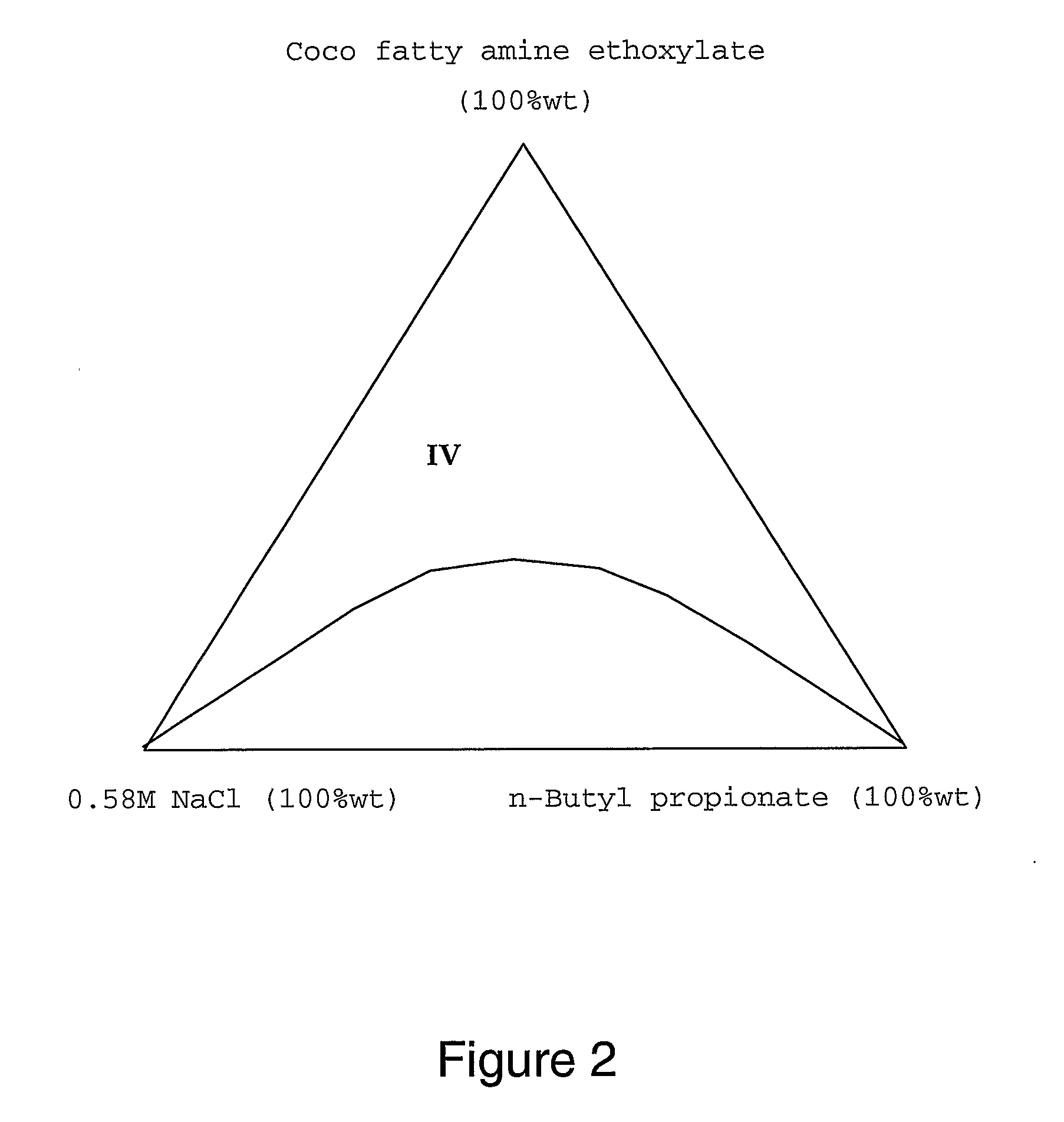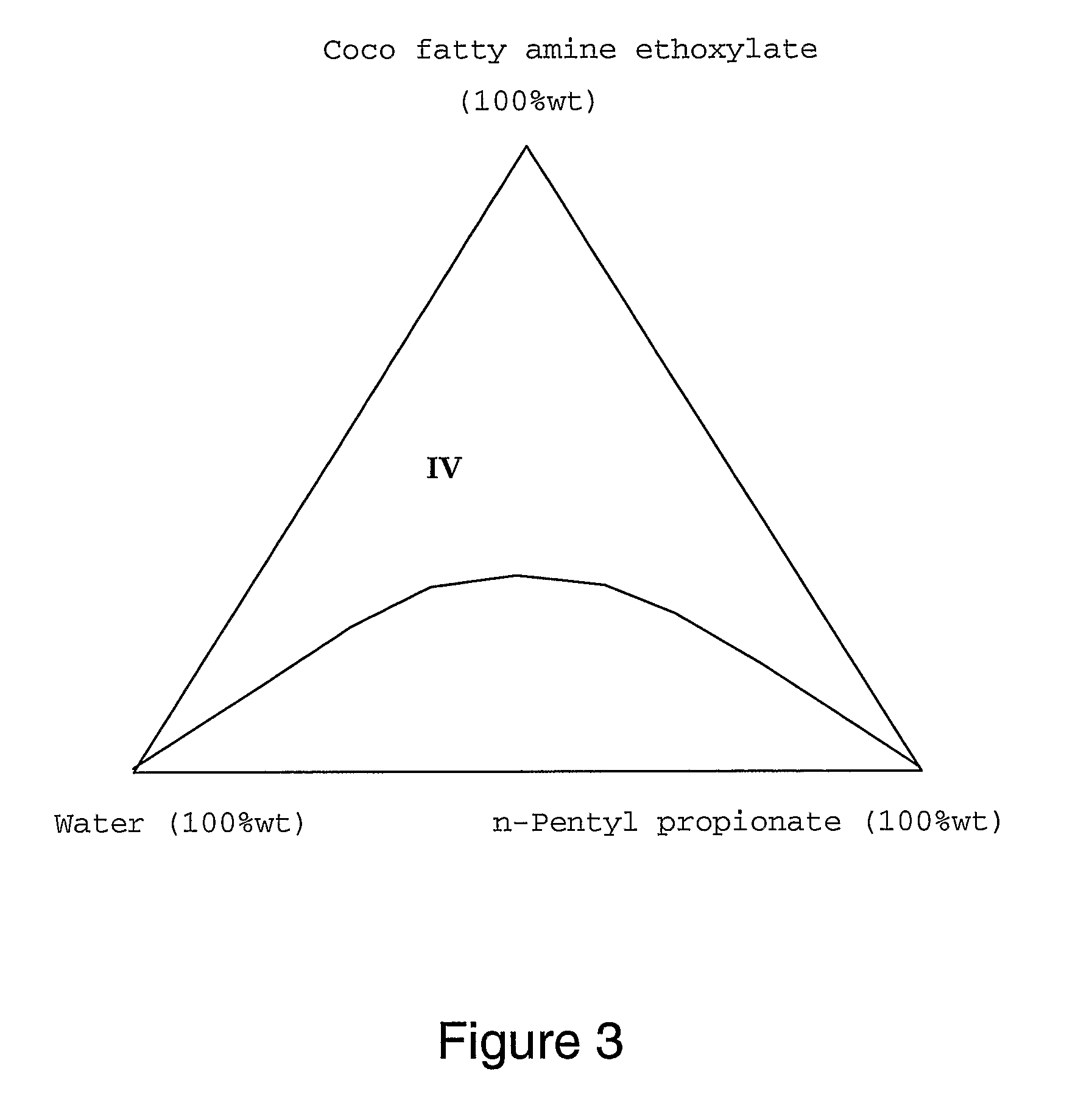This situation poses a number of difficulties for completion and post completion
workover operations designed for reworking a well and thence stimulating and optimising production.
In addition the oily wastes themselves may require remediation treatment.
The result is an extremely complicated process using multiple spacers of many different types.
There are also often problems and complications where different spacers and fluids mix at their interfaces with the same result of producing complex mixtures of waste for treatment and / or disposal.
Over a period of time considerable volumes of
crude oil contaminated solids and sludges build up within these tanks and separators and this requires removal and treatment prior to disposal.
However, the use of these non-aqueous fluids and the techniques described above may not render the oil contaminated surface clean enough and sufficiently
water wet and additional aqueous surfactant washing procedures, pills and spacers may be required following the use of such an organic washing
pill.
Sequestering agents such as
sodium gluconate, EDTA and NTA are often incorporated into these formulations to complex with
metal cations which may be present in the contaminating material and which often interfere with the efficiency of the surfactant formulations used.
There are several disadvantages in using
emulsion forming surfactant systems outlined below.
Because such products are highly acidic, aggressive, and highly reactive or contain other strong oxidising or reducing agents their use can entail some very deleterious risks and hazards to both personnel and equipment.
These systems are, by their very nature, extremely corrosive or caustic for example and special procedures need be observed with regards to storage, transport, handling and use.
In addition when such chemicals are used the potential adverse environmental effects from spillages of these formulations could also have ramifications on environmental compliance and performance.
While these chemicals may not
pose a significant
threat to the marine or
aquatic environment they certainly
pose a potential health and safety
threat being severely toxic and poisonous to personnel handling the chemicals.
These combinations tend to be less effective at removing synthetic base muds from surfaces.
Strictly
solvent based or surfactant based formulations both suffer from a lack of cleaning efficiency and both produce significant volumes of
emulsion wastes which are an expensive industry problem in their own right.
This in turn means that some of the surfaces may remain as oil wet surfaces if the
wetting properties of the surfactant formulation are found to be lacking.
Emulsion forming surfactant systems have performance disadvantages in that they have relatively high interfacial
surface tension properties when compared to microemulsion based systems.
As such
emulsion systems are less efficient cleaners than microemulsion forming surfactant based systems and larger volumes of washing fluid are required which carries incurred time, volume, transport and cost disadvantages with their use.
There are further substantial practical disadvantages of using emulsion forming surfactants in that the systems naturally produce emulsion type wastes.
These emulsions may be stable and therefore very difficult to separate especially when quantities of fine solids are present such as colloidal clays and
bentonite as is the case in waste drilling muds.
Oily
sludge also has a tendency to float or be suspended in water continuous systems and this can significantly interfere with
engineering and the operations of recycling the cleaning fluids.
Large quantities of oily water and
sludge is usually therefore produced as a result of these cleaning processes.
This produces an even larger volume of waste requiring treatment and disposal.
Economic treatment is not always achievable and many operators are beginning to implement zero
discharge policies.
As such, large volumes of this type of waste require transport to
shore and treatment and disposal by
waste management companies in this fashion at considerable cost to operators.
The extensive logistics required to perform this operation are also expensive and carry considerable associated health and safety risks, especially when the lifting and transportation of skips is required.
This latter operation is also severely hampered by
adverse weather conditions.
This phase separation significantly reduces the effectiveness of the
surfactant system employed.
The applicants have found that, if the operational temperature rises to above the cloud points of (microemulsion) surfactant systems, they phase separate and often do not achieve comparable levels of cleaning efficiency as those systems which are not
temperature sensitive and which do not phase separate.
In summary a significant problem encountered by the systems of the prior art has been the large volumes of surfactant solution required in order to achieve efficient cleaning.
In order to improve efficiency co-surfactants have been employed which in many instances are environmentally unfriendly.
However, the large amounts of surfactants employed results in expensive systems.
Moreover, the systems of the prior art in general are not suitable for use and / or perform poorly in brine conditions and over large temperature ranges.
 Login to View More
Login to View More 


